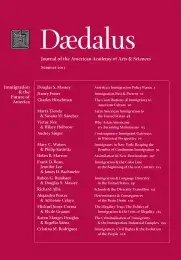Latin American Immigration to the United States
This essay provides an overview of immigration from Latin America since 1960, focusing on changes in both the size and composition of the dominant streams and their cumulative impact on the U.S. foreign-born population. We briefly describe the deep historical roots of current migration streams and the policy backdrop against which migration from the region surged. Distinguishing among the three major pathways to U.S. residence – family sponsorship, asylum, and unauthorized entry – we explain how contemporary flows are related both to economic crises, political conflicts, and humanitarian incidents in sending countries, but especially to idiosyncratic application of existing laws over time. The concluding section highlights the importance of investing in the children of immigrants to meet the future labor needs of an aging nation.
Both the size and composition of the U.S. foreign-born population have grown since 1960, rising from 9.7 million to nearly 40 million in 2010. Latin Americans have been a major driver of this trend, as their numbers soared from less than 1 million in 1960 to nearly 19 million in 2010.1 The source countries have also become more diverse, especially after 1970, when flows from Central America, Cuba, and the Dominican Republic surged. However, these census-based stock measures, which combine recent and prior immigration as well as temporary and unauthorized residents, reveal little about the pathways to U.S. residence, the ebb and flow of migrants from specific countries, or the forces that produce and sustain those flows.
In this essay, we provide an overview of immigration from Latin America since 1960, focusing on changes in both the size and composition of the major flows as well as the entry pathways to lawful permanent residence in the United States, with due attention to policy shifts. We describe the deep historical roots of current migration streams and explain how these flows are related both to changes . . .
